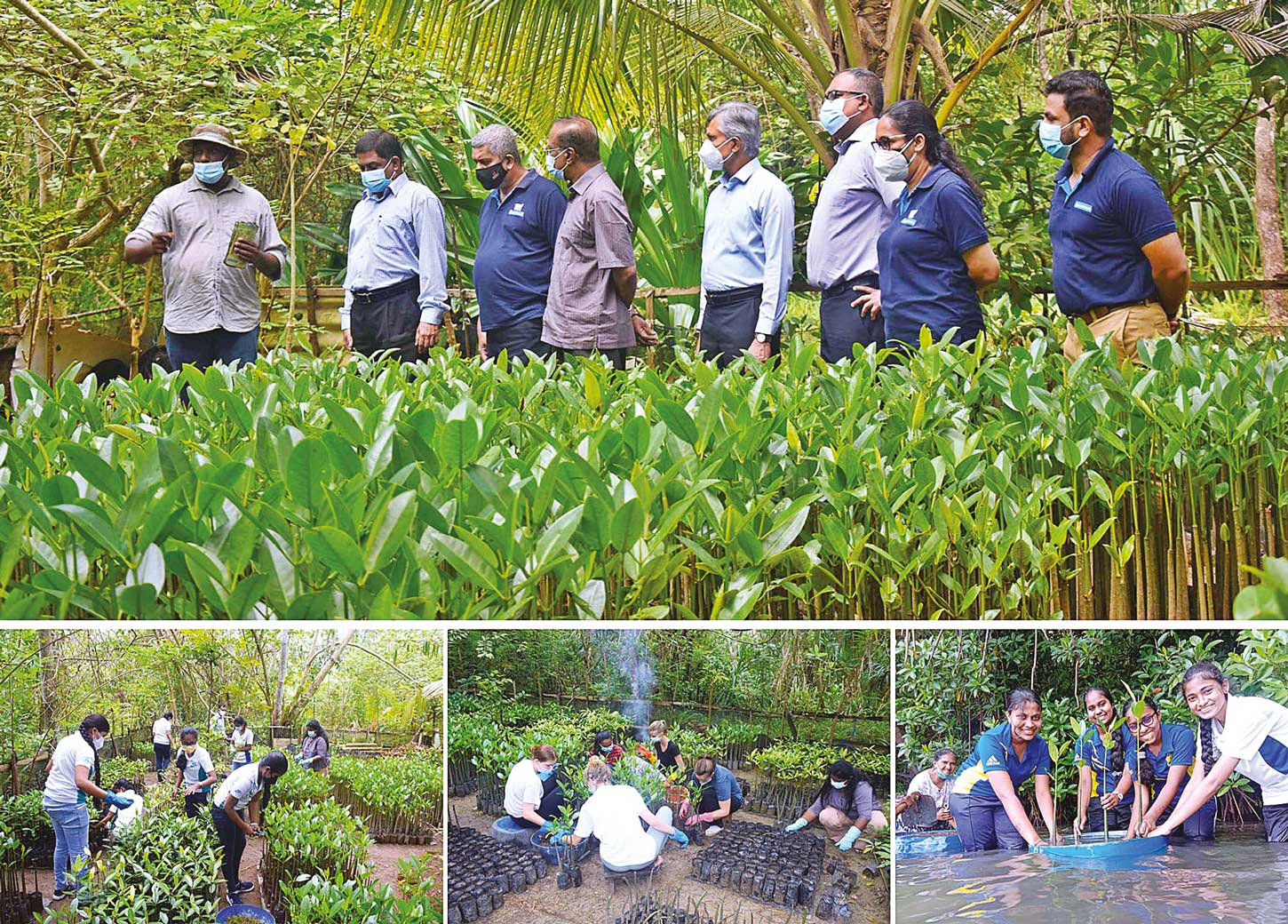COMMERCIAL BANK
Q: What is the role of corporates in the effort to make Sri Lanka green?
A: Making Sri Lanka green is the responsibility of all: the executive and legislature forming policies and laws; organisations minimising and reducing environmental impacts of business processes; and the general public adhering to good practices.

Managing Director/Chief Executive Officer
Every business organisation and each individual has a serious responsibility to our planet and its inhabitants. First and foremost, we must engage in ethical, fair and sustainable business practices, and ensure that businesses do not cause harm to the environment. Organisations also have a duty to make an extra effort to safeguard the planet for future generations.
The majority of organisations in Sri Lanka are committed to this; and driving planned, strategic initiatives to make our country green with the support of government and other industry entities. The needs of the hour are understanding the responsibility, instilling self-discipline, focussing on the big picture and planning for impact driven actions.
Q: How does your organisation merge sustainability-related measures into key performance indicators (KPIs)?
A: The bank follows a meticulously crafted sustainability strategy and blueprint as the guiding principle in its sustainability activities. It is based on three key pillars: sustainable banking, responsible organisation and community impact.
There are eight core areas under these pillars, aligning with seven selected Sustainable Development Goals (SDG) set by the UN. Our annual business objectives and targets are aligned with sustainability targets. These are derived based on each function’s core activities and how they contribute to achieving the bank’s sustainability goals.
For example, the Premises Department would have measurement indicators such as the percentage of energy reduction to be achieved and the number of branches to be converted to solar power.
Then the Risk Department’s Sustainability Dashboard would include metrics such as exposure to ‘negative list’ and ‘exclusion list’ activities as identified in social and environmental policies of the bank, due diligence statistics, and corrective action plans. The Green Finance function’s measurement parameters entail the achievement of a stipulated portfolio growth over the year.
Also, measurement mechanisms for these indicators include quarterly sustainability dashboards presented to management and internal ones compiled by the Sustainability Steering Committee covering 15 key areas.
Q: How do you identify environmental impacts and risks? And what policies are in place to minimise these?
A: The bank has an Integrated Risk Management Department, which analyses all aspects of risk… be it internal or external.
Environmental risks associated with lending projects are screened with a comprehensive Social and Environment Management System (SEMS) framework. Social and environmental impacts of the supply chain are also reviewed through supplier selection and evaluation processes.
We review aspects of the economic, environmental, social, human rights, societal and product responsibilities to rank these on their significance to our operations and materiality to the bank, and relevant stakeholders.
Our credit policy and lending guidelines clearly articulate policies for the bank to be a responsible leader in minimising transactions and activities that negatively impact the environment.
Q: What recent initiatives have you taken to protect the natural environment?
A: Operationally, we have taken all angles into consideration when we draw up plans to minimise our environmental footprint.
These span from installing solar panels in a majority of our branches, through converting to more environmentally-friendly energy options including natural lighting, to adoption of green building concepts; automation; centralisation of processes to save paper, energy and resources; efficient fleet management; and effectively managing e-waste.
On the customer front, our strategic digitalisation drive is ongoing and focusses on environment-friendly banking solutions. In addition to educating and empowering staff and customers, we have taken proactive steps to ‘green’ the supply channels of our business customers.
One of the key focus areas of our Corporate Social Responsibility Trust is marine conservation. The greatest culmination of these efforts is reflected in Commercial Bank being the only banking entity in Sri Lanka to become 100 percent carbon neutral in 2020.
Telephone
2486000
info@combank.net
Website
www.combank.lk






